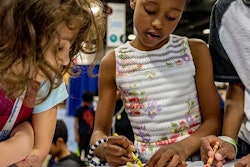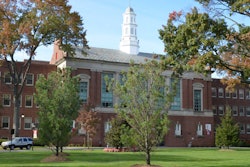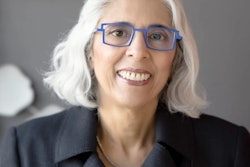WASHINGTON – On Monday, the U.S. Department of Education’s Office of Language Acquisition held a day-long forum in which panelists wrestled with a complicated question: How can English language learners (ELLs) overcome barriers to communication in critical science, technology, engineering and mathematics (STEM) fields?
Patricia Simmons, president of the National Science Teachers Association, noted that the average high school biology course requires students understand 20,000 terms—far more than a typical high school language course.
During the forum, High Quality STEM Education for English Learners: Challenges and Effective Practices, panelists agreed that high-level science courses, already a challenge for native English speakers, can prove daunting for ELLs, who are the fastest-growing student population segment in the United States.
ELLs now comprise 1 in 10 students in five states: Texas, Illinois, California, New York and Florida, said Dr. Rosalinda Barrera, who is the Office of Language Acquisition’s Assistant Deputy Secretary.
“Lack of educational success in the early grades creates a formidable challenge, some of which can’t be overcome,” said Barrera.
For example, during the 2009-2010 school year, less than one percent of English language learners took an AP science course.
ELLs are also slightly more likely to be stuck with inexperienced teachers—schools with at least 50 percent ELLs have a slightly larger percentage (13 percent) of first-year teachers.
During the day’s first panel, Guilliermo Solano-Flores, an associate professor at the University of Colorado-Boulder, discussed well-intentioned ELL “assessment enhancements” that often miss the mark.
“It is difficult to measure ELL proficiency,” he said, “and [these assessments] are not guaranteed to be dependable.” Many assessments, he said, assume that ELL students are homogeneous—when most come from a variety of educational and cultural backgrounds. And though ELLs are included in large-scale assessments, they’re often excluded from the development of these assessments.
In many assessments, wording needs to be revised to ensure that ELLs understand the language. And many other assessment enhancements, such as the use of a bilingual dictionary, assumes that students have appropriate word-searching skills, he said.
This concern was echoed by Dr. Cory Buxton, an associate professor at the University of Georgia. “We need to focus on academic vocabulary, but not necessarily the vocabulary we have always focused on,” he said during the day’s second panel.
“Increase, decrease, benefit, economic—words that show up across the content areas. Teachers assume that kids know and understand what they mean.”
Next, Michelle Shearer, a high school chemistry teacher who was recently named by President Obama as the 2011 National Teacher of the Year, took the stage.
On a large projector, she opened with an image of all 90 of her chemistry students.
“We talk about the students, and we talk about what they should be doing, but who are they?” she said. She noted that all of the students in the photo wore goggles.
“We’re all chemists. We have that shared identity,” Shearer said.
Science, with its ability to tap into each student’s naturally inquisitive nature, can be a great equalizer, she said.
Shearer teaches both deaf and ELL students at Urbana High School in Frederick, Md. Her 14-year career as an educator has forced her to reassess conventional approaches to teaching, she said.
While teaching at the Maryland School for the Deaf, she experimented with a purely visual approach to teaching, but that approach soon faltered. “What I realized very quickly is that it’s very taxing on your eyes. Literally,” she said.
She soon found that she had to abandon another commonplace teaching method — explaining labs before they began. Many students, she said, simply couldn’t absorb the amount of information that they were given. “The students were very good at letting me know when we weren’t communicating,” she said.
If her deaf students can’t understand a concept, she said, they make a gesture—a sweeping motion with both hands—as if to say, “This is going right over my head.”
She soon decided to start the lab first, without prior explanations, and discuss the content of each experiment afterward.
She calls it the “lab before content” method.
“Don’t just talk about the lab,” she advised. “Do the experiment, and then add in the language. They’re often more excited to talk about it from there.”
Erick Perez, a New York City public school teacher, began his presentation by challenging the adults in the room to answer a simple word problem—about three adults and two children who need to cross a river using one boat.
“If the boat can carry only one adult and one or two children, how many one-way trips will it take for the children and adults to cross?” he asked.
After participants scrambled for two minutes to answer the question, Perez showed a slide of his students’ own answers—a patchwork of charts, colorful drawings, mini-essays, and equations.
Perez said that these diverse approaches to problem solving should be encouraged.
“Children will be engaged in the problem,” he said. “They understand the context—crossing a river, a boat, taking trips.”
The challenge for teachers, he said, is to use simple problems as a springboard for more complex mathematical concepts.
Many panelists noted that language, rather than being an obstacle to STEM education, can be liberating for many ELL students. Rather than shying away from language, they said, teachers should encourage students to articulate scientific concepts.
Shearer has her students memorize a list of common scientific terms during the summer before school begins.
“STEM is its own language,” she said. “We need to speak the same language on the first day of school. It equalizes the playing field, and everyone comes armed with common knowledge.”


















